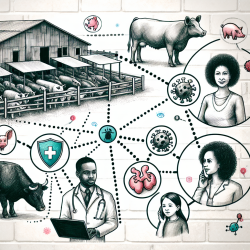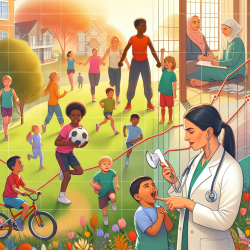In the realm of speech therapy, understanding the nuances of language production across different contexts is pivotal for developing effective therapeutic interventions. The study "Variation in Grammatic Complexity Across Three Types of Discourse" by Edith Chin Li, PhD, and colleagues, provides valuable insights into how grammatic complexity varies across picture description, procedural discourse, and story retelling tasks. This blog post aims to explore these insights and suggest practical applications for speech-language pathologists (SLPs) and therapists.
Understanding the Study's Key Findings
The research examined grammatic performance in individuals with aphasia compared to those with normal speech across three distinct types of discourse. Notably, the picture description task elicited the most complex grammatic usage, while story retelling ranked lowest in grammatic complexity. These findings suggest that less structured tasks, such as picture description, encourage a higher level of grammatic complexity.
Implications for Speech Therapy Practice
The study's outcomes have profound implications for speech therapy, especially for therapists working with aphasic patients. Here are several ways practitioners can apply these findings:
- Task Selection: Choose less structured tasks, like picture descriptions, to stimulate more complex grammatic output in therapy sessions. This approach can be particularly beneficial for patients with aphasia, encouraging them to engage more deeply with language structures.
- Therapeutic Strategies: Incorporate a variety of discourse tasks in therapy, ranging from highly structured to less structured, to address different aspects of language production. This can help in tailoring therapy to the specific needs and abilities of each patient.
- Assessment Techniques: Use the variation in grammatic complexity across discourse types as a diagnostic tool. Analyzing a patient's performance across different tasks can provide insights into their language abilities and areas that require focused intervention.
Further Research and Continuous Learning
While the study offers significant insights, it also opens avenues for further research. SLPs and therapists are encouraged to explore how these findings apply to a broader range of patients, including those with different types of language disorders beyond aphasia. Engaging with the latest research and participating in professional development opportunities, such as workshops and webinars, can help practitioners stay at the forefront of speech therapy practices.
Conclusion
The study "Variation in Grammatic Complexity Across Three Types of Discourse" sheds light on the intricate relationship between task structure and language production. By integrating these findings into clinical practice, speech therapists can enhance their therapeutic strategies, ultimately contributing to more effective speech therapy outcomes for individuals with aphasia and other language disorders. Encouraging further research and continuous learning in this area is essential for advancing our understanding and treatment of complex language phenomena.
To explore the original research and deepen your understanding of grammatic complexity across different types of discourse, please follow this link: Variation in Grammatic Complexity Across Three Types of Discourse.










